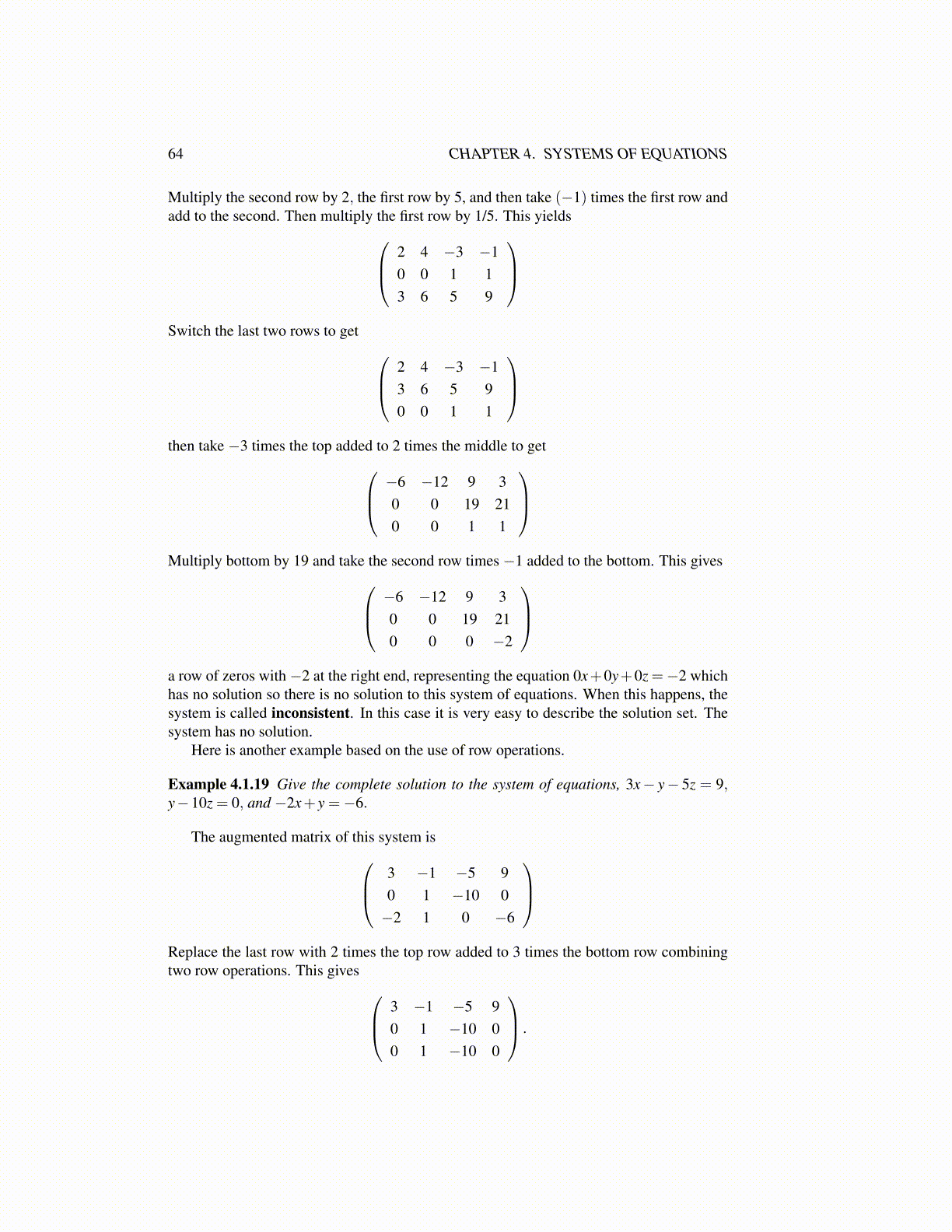
64 CHAPTER 4. SYSTEMS OF EQUATIONS
Multiply the second row by 2, the first row by 5, and then take (−1) times the first row andadd to the second. Then multiply the first row by 1/5. This yields 2 4 −3 −1
0 0 1 13 6 5 9
Switch the last two rows to get 2 4 −3 −1
3 6 5 90 0 1 1
then take −3 times the top added to 2 times the middle to get −6 −12 9 3
0 0 19 210 0 1 1
Multiply bottom by 19 and take the second row times −1 added to the bottom. This gives −6 −12 9 3
0 0 19 210 0 0 −2
a row of zeros with −2 at the right end, representing the equation 0x+0y+0z =−2 whichhas no solution so there is no solution to this system of equations. When this happens, thesystem is called inconsistent. In this case it is very easy to describe the solution set. Thesystem has no solution.
Here is another example based on the use of row operations.
Example 4.1.19 Give the complete solution to the system of equations, 3x− y− 5z = 9,y−10z = 0, and −2x+ y =−6.
The augmented matrix of this system is 3 −1 −5 90 1 −10 0−2 1 0 −6
Replace the last row with 2 times the top row added to 3 times the bottom row combiningtwo row operations. This gives 3 −1 −5 9
0 1 −10 00 1 −10 0
.